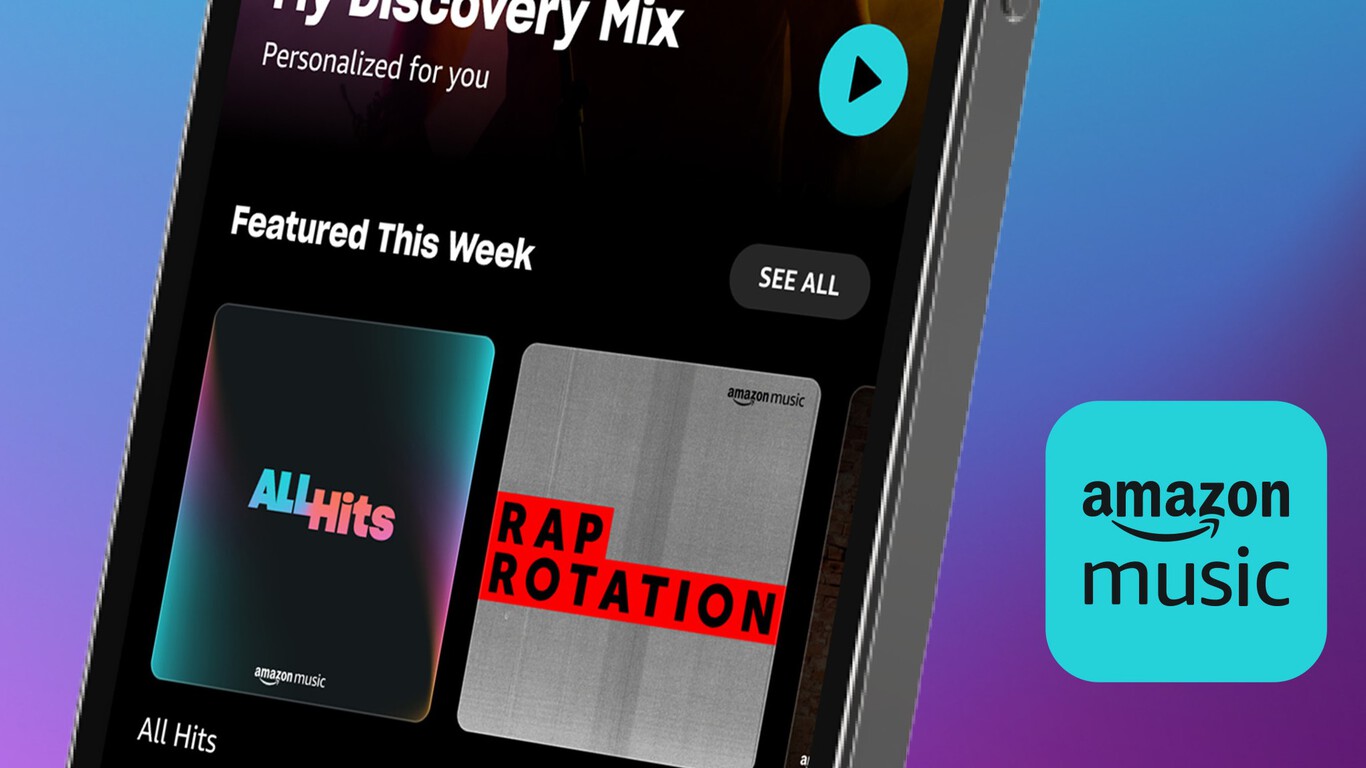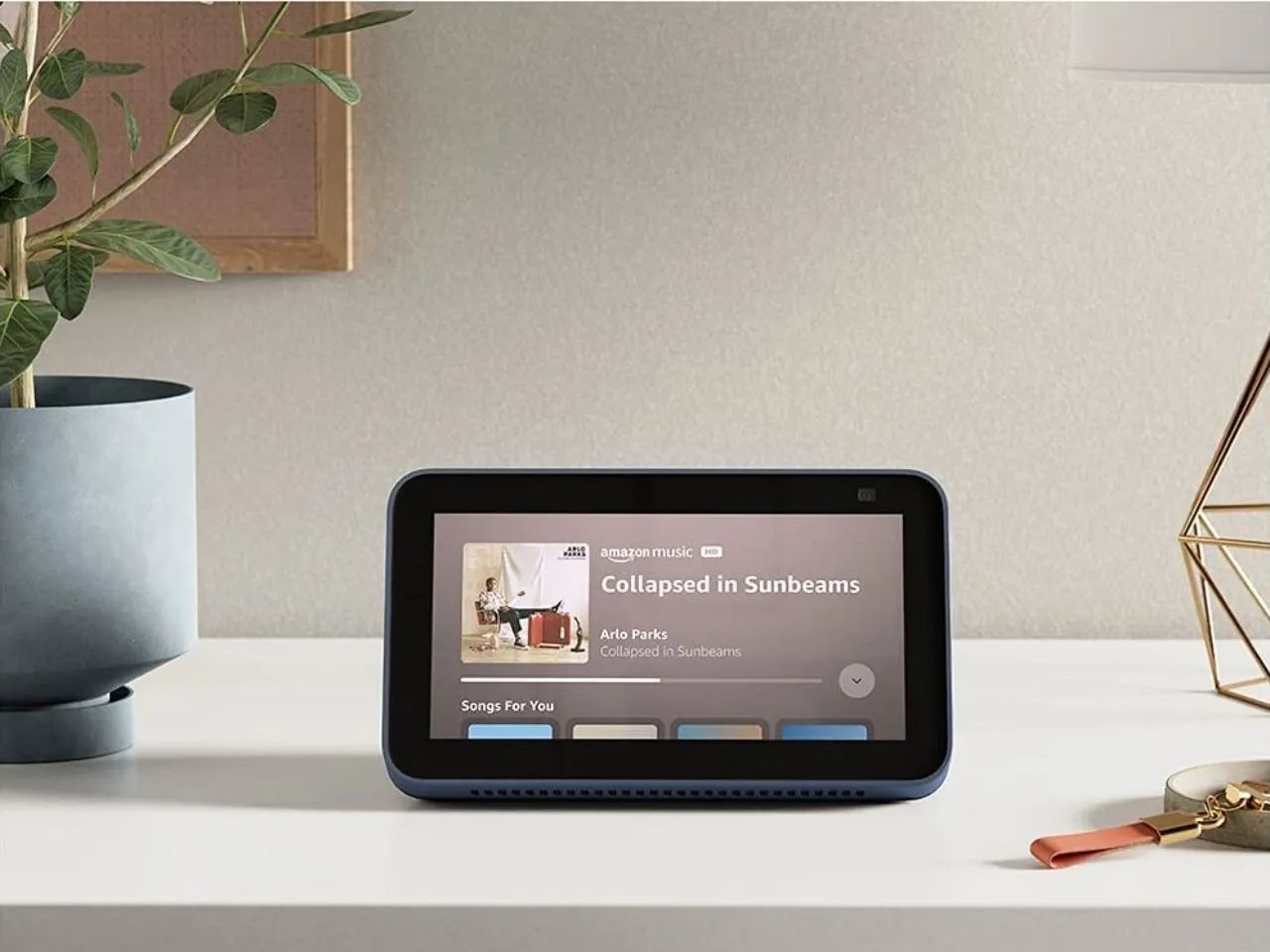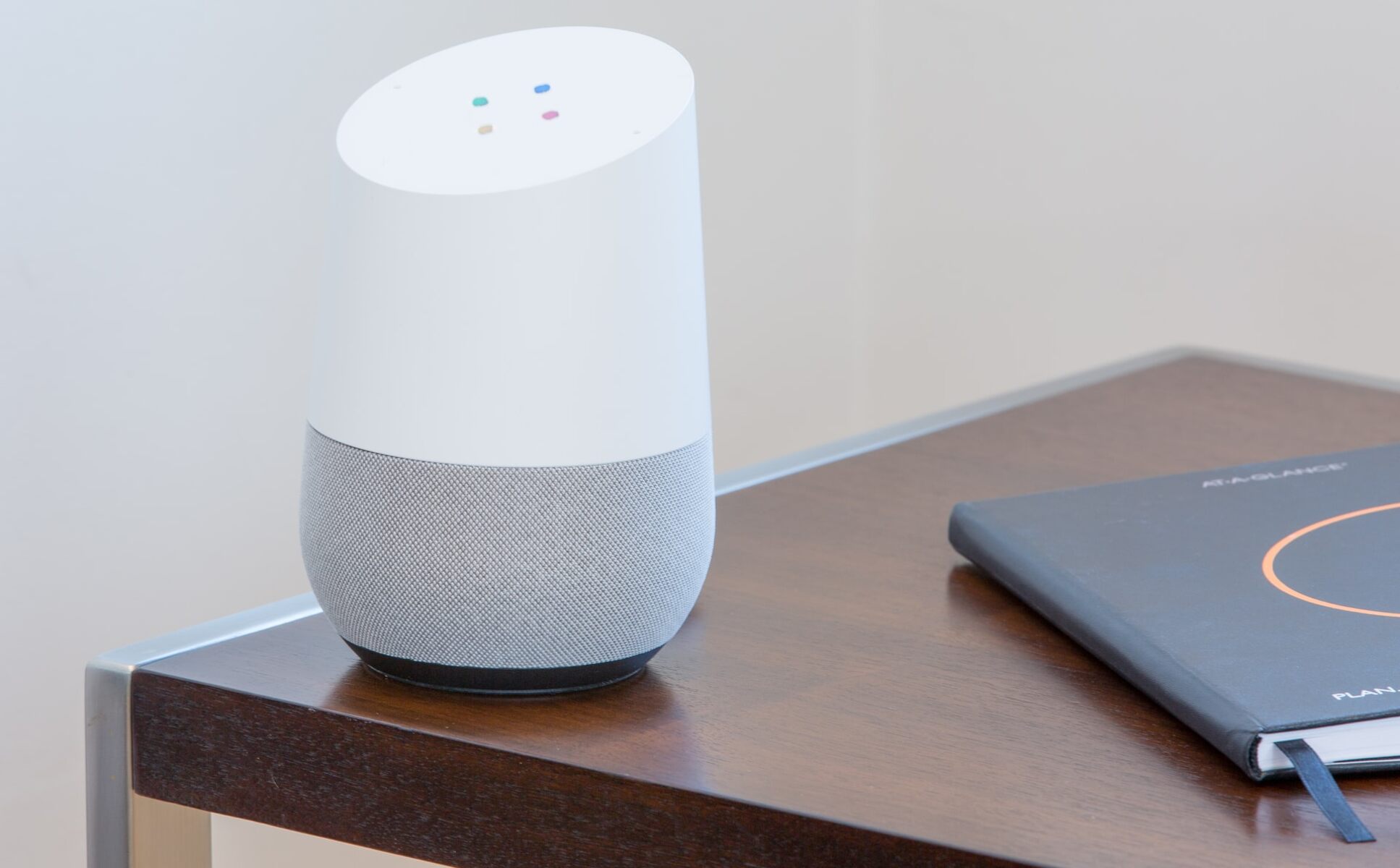Introduction
Welcome to the world of online streaming music, where you can access millions of songs at your fingertips. Amazon Music, one of the popular streaming platforms, has gained considerable popularity among music enthusiasts. However, many users have raised concerns about the substantial amount of data consumed while using Amazon Music. In this article, we will explore the reasons behind the high data usage and provide some useful tips for managing data consumption effectively.
Streaming services like Amazon Music rely on internet connectivity to deliver music to your devices. Each time you play a song, it is streamed from Amazon’s servers to your device in real-time. This constant streaming requires a significant amount of data, which can quickly add up, especially for those with limited data plans or slower internet connections.
To understand why Amazon Music uses so much data, we must consider various factors, including audio quality settings, offline listening, music video streaming, and background data usage. By examining these elements, we can gain valuable insights into how data is consumed and take steps to control and optimize data usage according to our preferences and requirements.
Whether you are a casual listener or a dedicated music lover, being aware of the data consumption associated with Amazon Music can help you make informed choices. By managing your data usage effectively, you can enjoy your favorite music without worrying about exceeding your data limits or experiencing a slowdown in internet speed.
In the following sections, we will dive deeper into the factors that contribute to data usage in Amazon Music and explore different strategies to minimize your data consumption. So, let’s get started and unravel the mystery behind Amazon Music’s data usage.
Understanding Amazon Music and Streaming Services
Before we delve into the reasons behind high data usage in Amazon Music, let’s first understand how streaming services in general operate.
Streaming services, such as Amazon Music, have revolutionized the way we listen to music. Unlike traditional methods of purchasing and downloading individual songs or albums, streaming platforms allow users to access an extensive catalog of music for a monthly subscription fee or through free ad-supported options. This vast library of songs is stored on remote servers, and users can stream them directly to their devices over the internet.
When you play a song on Amazon Music, the audio data is transmitted in small chunks in real-time. These chunks of data are buffered on your device to ensure a smooth and uninterrupted listening experience. As the song progresses, new data chunks are continuously streamed and added to the buffered section, while the previously played data is discarded.
Streaming services rely on a constant and stable internet connection to deliver music seamlessly. This means that as long as you have an active internet connection, you can access and listen to a vast collection of songs without the need to store them on your device permanently.
It’s important to note that streaming services like Amazon Music provide a multitude of features, such as personalized playlists, curated recommendations, and even music videos, all of which enhance the overall music listening experience. However, these features may contribute to higher data consumption, which we will explore in the subsequent sections.
Now that we have a basic understanding of how streaming services, including Amazon Music, function, let’s move on to discover the factors that contribute to data usage in Amazon Music.
Factors that Contribute to Data Usage in Amazon Music
Several factors contribute to the data consumption in Amazon Music. Understanding these factors can help you take control of your data usage and make informed choices when it comes to streaming music.
1. Audio Quality Settings: One of the primary factors impacting data usage in Amazon Music is the audio quality settings. Amazon Music offers different streaming quality options, including Standard, High, and HD. Higher quality settings result in larger file sizes and, subsequently, increased data usage. If you have a limited data plan or want to minimize data consumption, consider adjusting the audio quality settings to a lower option.
2. Offline Listening: Amazon Music allows users to download songs and playlists for offline listening. While this feature is convenient, especially in areas with limited or no internet connectivity, it does consume data when downloading the songs initially. Additionally, periodic updates and syncing of downloaded content also contribute to data usage. If you’re concerned about data consumption, consider managing your offline downloads and limit the frequency of updates.
3. Music Video Streaming: Amazon Music also offers a selection of music videos that can be streamed along with the audio. However, streaming music videos consumes significantly more data compared to audio-only streaming. If you frequently watch music videos, be aware that your data usage may be higher as a result. To minimize data consumption, consider sticking to audio-only streaming or reducing the frequency of music video playback.
4. Background Data Usage: Streaming services like Amazon Music may continue to consume data even when you’re not actively using the app. This can happen in the form of background updates, syncing, or pre-loading of recommended content. To manage background data usage, you can restrict or limit background app refresh settings in your device’s settings menu. By doing so, you can reduce unnecessary data consumption when you’re not actively using Amazon Music.
5. Streaming Duration and Usage Habits: The amount of time you spend streaming music directly affects your data usage. Longer streaming sessions naturally result in more data consumption. Taking breaks or limiting your streaming time can help manage your data usage effectively. Additionally, becoming mindful of your usage habits, such as avoiding continuous playback or playing songs on repeat unnecessarily, can help minimize data consumption without compromising your music listening experience.
6. Cross-Device Synchronization: If you use Amazon Music across multiple devices, such as smartphones, tablets, or computers, the service synchronizes your settings and playback progress. While this feature provides convenience, it also contributes to data usage as your devices communicate and stay in sync. If you want to reduce data consumption, consider disabling cross-device synchronization or limiting the number of devices linked to your Amazon Music account.
By understanding these various factors that contribute to data usage in Amazon Music, you can make adjustments and take control of your data consumption. Now that we have explored the factors, let’s move on to explore the audio quality settings in more detail and how they impact data usage.
Audio Quality Settings in Amazon Music
One of the significant factors affecting data usage in Amazon Music is the audio quality settings. When streaming music, choosing a higher audio quality setting can result in larger file sizes and increased data consumption. However, it also enhances the overall audio experience. Let’s take a closer look at the available audio quality settings in Amazon Music and their impact on data usage.
Amazon Music offers three audio quality options:
- Standard: This is the default audio quality setting in Amazon Music. It provides a balance between audio quality and data usage, making it suitable for most users. When using the Standard setting, Amazon Music streams audio at a bitrate of approximately 256 kbps, resulting in moderate data consumption.
- High: The High audio quality setting improves the audio quality further by streaming music at a bitrate of approximately 320 kbps. This higher bitrate enhances the clarity and depth of the audio but results in slightly increased data usage compared to the Standard setting.
- HD/Ultra HD: For those seeking the highest audio quality experience, Amazon Music offers HD and Ultra HD options. These settings provide studio-quality audio and are suitable for audiophiles and users with high-end audio equipment. The HD setting streams music at a bitrate of up to 850 kbps, while the Ultra HD setting can go even higher, depending on the source material. These higher quality settings significantly increase data consumption.
It’s essential to note that the audio quality settings are adjustable for both streaming and downloading. If you have limited data or want to minimize data usage, consider using the Standard quality setting for streaming. For offline listening, you can opt for High or HD quality if you have sufficient storage space and are willing to allocate more data for downloads.
Moreover, Amazon Music also offers an “Offline Mode” option, which disables streaming and only allows playback of downloaded content. Enabling this mode can be beneficial if you want to avoid accidental and unnecessary streaming, thereby conserving data usage.
To change the audio quality settings in Amazon Music, follow these steps:
- Open the Amazon Music app on your device.
- Tap on the menu icon (three horizontal lines) in the top-left corner of the screen.
- Select “Settings” from the menu.
- Choose “Streaming Quality” or “Download Quality,” depending on your preference.
- Select the desired audio quality setting.
- Exit the settings menu, and your new audio quality preferences will be saved.
By adjusting the audio quality settings in Amazon Music, you can strike a balance between desired audio quality and data consumption. It allows you to optimize your streaming experience based on your internet connection and data plan limitations.
Now that we have explored the audio quality settings let’s move on to discuss offline listening and its impact on data usage in Amazon Music.
Offline Listening and Data Usage on Amazon Music
One of the convenient features offered by Amazon Music is the ability to download songs, albums, and playlists for offline listening. This feature allows you to enjoy your favorite music even when you don’t have an active internet connection. However, it’s important to understand how offline listening affects data usage in Amazon Music.
When you download songs for offline listening in Amazon Music, the initial download consumes data. The amount of data required for downloading depends on the audio quality setting you choose and the length of the content being downloaded. Higher quality settings and longer content result in larger file sizes and, consequently, more data consumption during the download process.
However, once the content is downloaded, it can be played offline without utilizing any additional data. This is particularly beneficial for users with limited data plans or those in areas with poor internet connectivity.
It’s worth noting that offline listening also involves periodic updates and syncing to ensure that the downloaded content is up to date with any changes or additions made on the server. These updates contribute to data usage, although the amount of data consumed during sync is generally minimal compared to the initial download.
To manage data usage during offline listening in Amazon Music, consider the following tips:
- Select the appropriate audio quality: Before downloading content for offline listening, choose the audio quality setting that best suits your storage availability and data usage requirements. Higher quality settings result in larger file sizes, so if you have limited storage or want to conserve data, opt for a lower quality setting.
- Be mindful of updates and sync: Amazon Music periodically checks for updates and syncs your downloaded content in the background. To minimize data consumption, you can manually initiate updates when connected to Wi-Fi or adjust the automatic update settings in the app to match your preferences.
- Manage your offline downloads: If you have limited storage space or want to minimize data usage, regularly review and manage your offline downloads. Delete songs, albums, or playlists that you no longer need or frequently listen to, and focus on keeping only the content you’ll enjoy during offline sessions.
- Take advantage of Wi-Fi: When downloading or updating your offline content, connect to a Wi-Fi network whenever possible. This reduces the data consumption on your mobile data plan and ensures a smoother and faster downloading process.
By following these tips, you can optimize your offline listening experience in Amazon Music while effectively managing data usage. Offline listening provides the flexibility to enjoy your favorite music without being solely dependent on an active internet connection.
Now that we have explored offline listening and its impact on data usage, let’s examine another feature offered by Amazon Music – music video streaming, and how it contributes to data consumption.
Music Video Streaming on Amazon Music
Amazon Music offers a unique feature that sets it apart from other music streaming platforms – the ability to stream music videos. This feature allows users to not only listen to their favorite songs but also watch accompanying music videos. However, it’s important to consider how streaming music videos impacts data usage in Amazon Music.
Music videos typically require more data compared to audio-only streaming. This is because videos contain both audio and visual components that need to be streamed simultaneously. The data consumption for music video streaming depends on various factors, including the resolution and length of the video, as well as your internet connection speed.
When streaming music videos in Amazon Music, the data usage can be significantly higher compared to audio-only streaming. Videos require more bandwidth to maintain a smooth playback experience, resulting in larger amounts of data being transferred. If you frequently watch music videos, it’s essential to be mindful of the impact on your data usage, particularly if you have limited data or are close to reaching your data plan’s limit.
To manage data usage when streaming music videos in Amazon Music, consider the following suggestions:
- Limit music video playback: If you are concerned about data consumption, consider reducing the frequency of music video streaming. Reserve music video viewing for special occasions or specific songs that you truly want to experience visually.
- Opt for audio-only streaming: If data usage is a primary concern, you can choose to stream music in audio-only mode, avoiding music videos altogether. This way, you can still enjoy the music without utilizing additional data for video streaming.
- Adjust resolution settings: Some streaming platforms, including Amazon Music, allow you to adjust the video resolution settings. Lowering the video resolution reduces the data consumption while sacrificing some visual quality. Experiment with different resolution settings to find the balance between data usage and video quality that suits your preferences.
- Connect to Wi-Fi for video streaming: Whenever possible, connect your device to a Wi-Fi network for music video streaming. This allows you to use the internet connection provided by your Wi-Fi without consuming your mobile data plan.
By implementing these strategies, you can manage your data usage effectively while still enjoying the option to stream music videos on Amazon Music. Balancing your preference for music videos with the need to conserve data can help you have an enjoyable streaming experience without exceeding your data limits.
Now that we have explored music video streaming and its impact on data consumption, let’s move on to discuss background data usage in Amazon Music and how it can contribute to overall data usage.
Amazon Music’s Background Data Usage
When you use Amazon Music, it’s important to be aware of the background data usage that occurs even when you are not actively using the app. Background data usage refers to the data consumed by the application while running in the background, performing tasks such as syncing, updates, and pre-loading content.
Streaming services like Amazon Music often utilize background data to enhance the user experience by providing personalized recommendations, syncing playlists across devices, and keeping the app up to date with new content. However, this background activity can contribute to overall data usage, which may be of concern if you have limited data or want to minimize unnecessary data consumption.
Fortunately, there are ways to manage background data usage in Amazon Music:
- Limit background app refresh: Most devices allow you to manage background activity for individual apps. In the device settings, you can disable or restrict background app refresh for Amazon Music, preventing the app from consuming data when not in use.
- Adjust app notification settings: Notifications from Amazon Music can trigger background updates or syncing. Consider adjusting the notification settings to reduce the frequency of updates and minimize background data usage.
- Disable auto-downloading or pre-loading: Amazon Music might automatically download recommended songs or pre-load content in the background. Disabling these features can help prevent unnecessary data consumption when you’re not actively using the app.
- Monitor data usage: Keep an eye on your data usage to identify any unexpected spikes or patterns. Most mobile devices provide data usage tracking, allowing you to stay informed about the data consumed by Amazon Music. This awareness can help you identify areas where you can optimize or manage data usage more effectively.
By implementing these strategies, you can mitigate background data usage in Amazon Music and have better control over your overall data consumption. However, it’s important to find the right balance between managing background data usage and still enjoying the benefits and convenience offered by the app.
Now that we have explored Amazon Music’s background data usage, let’s move on to discuss strategies for managing data usage effectively in Amazon Music.
Managing Data Usage in Amazon Music
To ensure efficient data usage while enjoying your favorite music on Amazon Music, it is essential to implement effective strategies for managing data consumption. By following these guidelines, you can have better control over your data usage and prevent unexpected data overages:
- Monitor your data usage: Keep track of your data usage regularly. Most mobile devices provide data usage tracking, allowing you to monitor the amount of data consumed by Amazon Music. This awareness will help you identify any unusual data spikes or patterns.
- Choose appropriate audio quality settings: Adjust the audio quality settings in Amazon Music based on your preferences and data restrictions. Opt for lower quality settings, such as Standard or High, to reduce data consumption. Reserve HD or Ultra HD settings for times when you have a stable Wi-Fi connection or specifically want to indulge in high-quality audio.
- Be selective with offline downloads: Download songs, albums, or playlists for offline listening mindfully. Manage your offline content regularly and delete downloads that you no longer need or frequently listen to. This will help optimize storage space on your device and reduce unnecessary data consumption during updates and syncing.
- Avoid excessive music video streaming: While music videos can enhance your music experience, they consume more data compared to audio-only streaming. Limit the frequency of music video streaming to minimize data usage, or consider switching to audio-only streaming for certain playlists or songs.
- Take advantage of Wi-Fi networks: Whenever possible, connect to a Wi-Fi network for streaming and downloading content from Amazon Music. This will prevent your mobile data plan from being utilized and ensure faster and uninterrupted access to your favorite music.
- Disable background data usage: Review and adjust the background data usage settings for Amazon Music. Disable or limit background app refresh, auto-downloading, and pre-loading of content to prevent unnecessary data consumption when the app is not actively in use.
- Use offline mode: When you’re in a location with poor or no internet connectivity, activate the offline mode in the Amazon Music app. This will restrict the app to playing only the downloaded songs, eliminating any data usage for streaming.
By implementing these strategies, you can effectively manage your data usage while still enjoying the vast catalog of music available on Amazon Music. Finding the right balance between data conservation and an enjoyable music experience will help you make the most of your streaming service without exceeding your data limits.
Now that we have explored various techniques for managing data usage in Amazon Music let’s conclude our discussion.
Conclusion
Amazon Music offers a vast collection of music that can be accessed anytime, anywhere. However, it’s important to be mindful of the data consumption associated with streaming music on the platform. Understanding the factors that contribute to data usage and implementing effective strategies for data management can help you enjoy your favorite tunes while staying within your data limits.
By adjusting audio quality settings, such as selecting lower quality options for streaming and offline downloads, you can reduce data usage without compromising the overall music listening experience. Being selective with offline downloads and managing your content regularly will optimize storage space and prevent unnecessary data consumption during updates and syncing.
When it comes to music video streaming, it’s important to be aware of the higher data consumption. Limiting the frequency of music video playback or switching to audio-only streaming can help preserve your data allowance.
Managing background data usage is another crucial aspect of controlling data consumption in Amazon Music. By disabling or restricting background app refresh, auto-downloading, and pre-loading of content, you can prevent unnecessary data usage when the app is not actively in use.
Finally, taking advantage of Wi-Fi networks whenever possible and utilizing offline mode in areas with poor connectivity will further help conserve data while still enjoying your favorite songs on Amazon Music.
By integrating these strategies into your music streaming routine, you can effectively manage data usage in Amazon Music, ensuring that you can listen to your favorite songs without exceeding your data limits or experiencing slowdowns in internet speed. Enjoy the music, stay connected, and make the most of your streaming experience on Amazon Music.

























